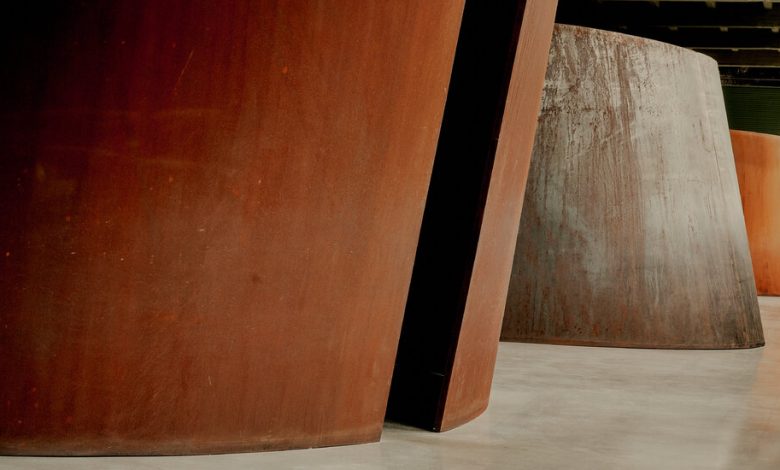When Richard Serra’s Steel Curves Became a Memorial

After the yelling, the hearings, the lawsuit, the dismantlement, Richard Serra entered the last decade of the last century with his mind cast toward the classics.
He was happy to see the end of the ’80s. The American sculptor, who died Tuesday at 85, got caught up in the Reagan-era culture wars with “Tilted Arc,” a 120-foot plate of curved Cor-Ten steel that sliced across Manhattan’s Federal Plaza. It drew outrage almost as soon as it was installed in 1981. His fellow New Yorkers shouted at him on the street. People called his loft on Duane Street with death threats. (This newspaper, too, was not always kind.) The work was finally removed — in Serra’s estimation, destroyed — in March 1989. You could see the appeal of a trip to Italy.
In Rome, he visited San Carlo alle Quattro Fontane: a chapel designed by Francesco Borromini that’s one of the prizes of Baroque architecture, topped by an oval dome. “The central space is simply a regular ellipse, and the walls that surround it are vertical,” he would later recall. “I walked in and thought: what if I turn this form on itself?”
Back in New York, after consulting with engineers and trying out new computer-aided design software, he created a sculptural form that had not existed before: free-standing plates of weatherproof steel whose top and bottom edges form two identical, misaligned ellipses. The rolled steel weighed some 20 tons, but had a finesse that belied their mass. They had the can-you-top-this confidence of an artist who saw Borromini as his peer, but they were more inviting than Serra’s previous steel works, beckoning you to explore their warmly patinated expanses.
The torqued ellipses, quite literally, shifted the axis of Serra’s career: from solid to space, from process to perception, from the artist’s actions to the viewer’s bodily experience. Their enclosing volumes provided this once controversial, always gruff artist an unexpectedly congenial third act; the ellipses at the Dia Art Foundation in Beacon, N.Y., have become a reliable venue for second dates, an ideal backdrop for cultured flirtation. Whereas for me the ellipses have remained these past decades something more like empty tombs, wedded in my mind to another site of deformed steel, and to the life of an artist who experienced Sept. 11, 2001, with horrible immediacy.



